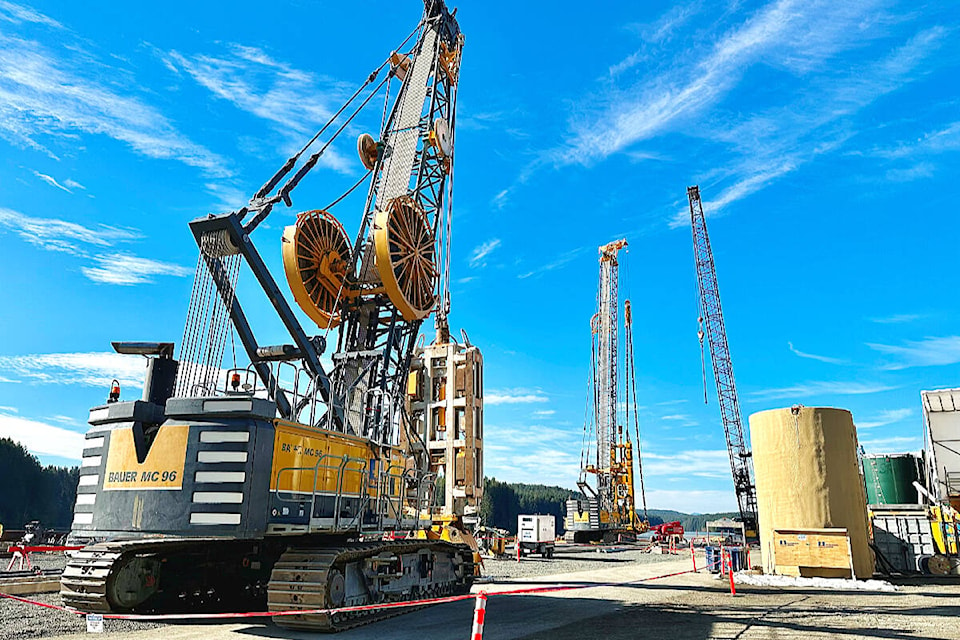Project work began last summer and now about 130 people are working at the John Hart Dam site to seismically upgrade various components of the dam so it can withstand a 1-in-10,000 year earthquake.
One of the seismic upgrades includes the addition of a water seepage barrier within the largest earthfill section of the dam. Work is starting in mid-November to construct a narrow plastic concrete wall that’s about a metre wide and will go down 32 metres in some areas to connect to the base of the dam.
“The wall is designed to be a mixture of water, cement, bentonite or clay, and sand and gravels so it’s not rigid and can better withstand an earthquake,” says Stephen Watson, BC Hydro spokesperson. “This barrier, along with the existing water barrier wall within the dam, will retain water within the reservoir after a major earthquake
Aecon-EBC General Partnership is BC Hydro’s civil works contractor and their subcontractor, Bauer Foundations, will lead the construction of the new water barrier wall that may take about six months to complete.
In order to build it within the existing earthfill dam, the first step was to build two temporary concrete guides placed along the top of the John Hart Middle Earthfill Dam. The wall will be built downward between the two guides.
“This allows for the precise excavation and placement of the new wall using a specialized crane excavator,” said Watson. “It will cut and remove the material and as the material is removed it will be backfilled with the slurry plastic concrete mix that will harden with time.”
The specialized slurry mix will be made locally by Island Ready Mix.
Once the new wall is in place, the temporary construction concrete guides along the top of the dam will be removed.
“The middle earthfill dam will then be more secure from an earthquake with two water seepage barriers,” said Watson.
Work will then begin in spring 2024 on the installation of a new section of silt curtains in the John Hart Reservoir around this part of the dam to contain the water turbidity within the work area, and allow for a barge and crane to remove the loose or organic soil beside the upstream side of the dam. Once that work is complete a new upstream berm will be placed into the reservoir and extend the dam. There will also be seismic upgrades to the downstream side of the dam.
The organic soil or dredgeate material removal on the upstream side of the John Hart North Earthfill Dam will begin this month as the two silt curtains hanging from a floating boardwalk within the reservoir have already been installed around that section of the dam. An upstream and downstream berm will be placed along the north earthfill dam.
All of the removed material from the reservoir bottom, about 75,000 cubic metres or the equivalent of about 30 Olympic-sized swimming pools, will be placed along the old penstock corridor to largely fill it in.
“Some fascinating work is taking place at the dam,” added Watson. “Every year that goes by the dam is getting seismically stronger and eventually, by 2030, it will be able to withstand a major earthquake and maintain downstream public safety.”
